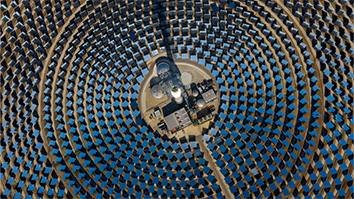Citation
Lyons, L. R., Nishimura, Y., Shi, Y., Zou, S., Kim, H. J., Angelopoulos, V., … & Fornacon, K. H. (2010). Substorm triggering by new plasma intrusion: Incoherent‐scatter radar observations. Journal of Geophysical Research: Space Physics, 115(A7).
Abstract
In the companion paper, we identified a repeatable sequence of events leading to substorm onset in THEMIS all-sky imager observations: enhanced flows bring new plasma into the plasma sheet. The new plasma then moves earthward as a flow channel, bringing it to the near-Earth plasma sheet and where it produces onset instability. New plasma entering the dusk (dawn) convection cell drifts equatorward and eastward and then around the Harang reversal, leading to pre-midnight (near- and post-midnight) onset. Here we present evidence supporting this sequence using incoherent scatter radar (ISR) ionospheric observations. Using the Sondrestrom ISR, we find that enhanced flows of new plasma commonly enter the plasma sheet from the polar cap ∼8 min prior to onset. These flows are related to poleward boundary intensification signatures, consistent with the inferences from the imagers. Using the Poker Flat ISR (PFISR), we find that shortly before onset, enhanced westward flows reach the subauroral polarization streams (SAPS) region equatorward of the Harang reversal (dusk-cell onsets) or enhanced eastward flows enter the onset region from the poleward direction (dawn-cell onset). PFISR proton precipitation signatures are consistent with the possibility that the enhanced flows consist of reduced-entropy plasma sheet plasma, and that onset occurs poleward of much of the enhanced SAPS flow (dusk-cell onsets) or equatorward of the enhanced eastward flows (dawn-cell onsets). Consistency with reduced entropy plasma is seen only within the enhanced flows, leading us to suggest that intrusion of low-entropy plasma may alter the radial gradient of entropy toward onset instability.


